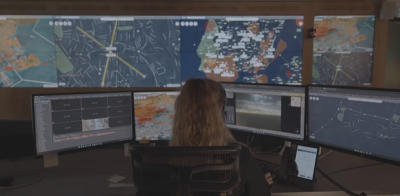On March 11, 2022, the Federal Aviation Administration (FAA) released the recommendations from the advisory and rulemaking committee (ARC) regarding the authorization for drones to fly beyond visual line of sight (BVLOS).
According to sources, this ARC was the FAA’s largest in terms of participants and that might explain the time they took to reach a decision on the recommendations. What is interesting is the fact that some of the ballots approving the release of the recommendations to the FAA came with extensive and comprehensive comments against some of the specific recommendations in the submitted version.
The final report, before it was presented to the FAA, was subject to a vote of its 86 members and a final opportunity for these to submit comments that will eventually form part of the official document. The tally of votes was as follows:
- 44 – Concur as Written
- 20 – Concur with Comment
- 10 – Non-Concur
- 8 – No Ballot Submitted
- 4 – Abstentions
(To read the specific comments, please refer to page 227 of the final ballot report.)
Today, general aviation (GA), drone enthusiasts, and UAV commercial operators still behave like separate entities, but the truth is that they are not that different. Perhaps on the surface having a pilot on board is enough distinction for some, but the reality is that we all want to occupy the same space, the National Airspace (NAS), and we all want to have the best safety record, and we all want to make money doing what we love.
These two industries that today see themselves as separate have no choice but to integrate under the watching eye of the FAA in the USA, EASA in Europe, and the many other civil aviation authorities chartered with the awesome responsibility of keeping the skies safe for the flying public and the people on the ground.
Even though members of the ARC that were linked to drone-related activities were more numerous than those linked to crewed aviation, there was a sense that both groups have similar goals in mind, even though they disagree on the how and when. We reached out to one individual member and three organizations that were members of the ARC to try to paint a realistic picture about the final version of the report.
AOPA, the Aircraft Owners and Pilots Association, was founded in 1939. It is currently the country’s largest general aviation organization in terms of membership with over 300,000 members. We spoke with Christopher Cooper, Sr. Director, Regulatory Affairs, who was also a member of the ARC.
“AOPA appreciates the FAA’s work towards the safe integration of crewed and uncrewed aviation through the creation of the BVLOS ARC. It is a necessary step to ensure the skies remain the safest in the world as BVLOS drones begin to routinely operate in the national airspace with general aviation,” Chris said. “However, while we appreciate the ARC’s recognition that crewed aircraft should not be subject to equipage mandates to satisfy the drone industry’s collision avoidance responsibilities, several recommendations will not provide safe integration for future BVLOS operations, nor do they represent a consensus of the BVLOS ARC membership.”
Everyone we talked to seems to agree with the assertion that the members of the ARC were overwhelmingly part of the UAV community, and that general aviation was represented but in the minority.
Jon Damush, CEO of Iris Automation, is a great example of someone who represents a company that is mainly focused on supplying drones with detect and avoid (DAA) systems that would eventually replace the pilot in the cockpit. Jon is an avid pilot himself, and we have spent quite a few hours talking about our respective adventures over the safest skies in the world while we fly our families to remote and sometimes exotic locations.
“I believe the BVLOS ARC made a large number of insightful recommendations and, in general, the document is a good step forward. That said, with such a large group of diverse stakeholders, you will probably never achieve unanimous agreement, and while I agree with the majority of the recommendations, there are some recommendations I do not agree with,” Jon said. “As an aviator, I want the integration to be safe, and as a vendor of UAV-related technology, I want the integration to be swift, so this document, in my opinion is a start toward addressing the concerns of all groups but there is certainly plenty of work still to be done.”
Another large organization that had reservations about the ARC report was the Experimental Aviation Association (EAA), and they shared the concerns expressed explicitly in the final ballot document.
“Our main concern is the assumption by the UAV community that nothing happens in aviation under 500 ft.,” said Lily Johnson, Government Advocacy Specialist at EAA. “Nothing is further from the truth. Many of our 250,000 members operate different types of recreational and commercial aircraft ‘low and slow’ at these altitudes, and they’ve been exercising their right to do so for generations.”
By reading some of the comments in the final ballots, we can deduce that the uncrewed community believes that below 500 ft. flying is safe for unsupervised and uncrewed aircraft. There are many different types of aircraft that regularly use that component of the NAS, and some, if not most, do not have electrical systems or two-way communications.
According to EAA, three items are important to the crewed aviation community when it comes to the final way in which these aircraft will share the skies:
- The safety of crewed aircraft is paramount.
- No new equipment will be required in existing aircraft to facilitate the integration.
- Maintain current NAS availability for everyone.
Another important component of the GA puzzle are the aircraft manufacturers and the role they play in every aspect of the industry. The General Aviation Manufacturers Association (GAMA) is the organization that works for the different producers of aircraft, and they were voting members of the ARC. Specifically, Jens C. Hennig, Vice President, Operations at GAMA, was a member of the ARC, and, as such, he was part of the development of the final document.
“At GAMA, we have members who manufacture general aviation aircraft, but we also have eVTOLS (electric vertical takeoff and landing) and UAV startups that are actively developing aerial platforms that will be uncrewed,” Jens said. “Unfortunately, the ARC didn’t finish its work or resolve many of the difficult questions facing UAV integration, and, by not doing so, it made the job of the FAA harder.”
With such a diverse group of members, GAMA has a unique perspective on the challenges that a full integration of crewed and uncrewed aircraft represents for regulators.
“General aviation is an established industry that moves slowly and deliberately always with safety as the main goal. On the other hand, the uncrewed industry is new and wants to move swiftly to occupy its rightful space, not necessarily having current safety standards as their main objective,” Jens stated. “GAMA represents both, and we will always be at the table to help industry and regulators reach a consensus that guarantees safe skies for everyone.”
Now the ball is in the court of the FAA, and it is their difficult task to take the recommendations from the ARC and, hopefully, turn them into a regulation that would allow for a safe integration of crewed and uncrewed aircraft in the NAS—but do not hold your breath. The road ahead is still plagued by obstacles big and small, and shared skies, even though we are convinced they are inevitable and desirable, are still a few years away.















Comments